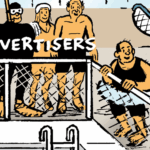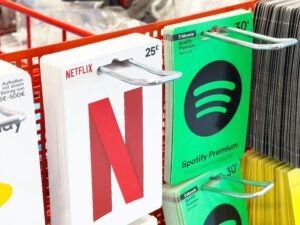![]() While Rubicon Project might be widely thought of as a provider of ad tech for the supply side, CEO Frank Addante hopes to dissuade advertisers from that perception.
While Rubicon Project might be widely thought of as a provider of ad tech for the supply side, CEO Frank Addante hopes to dissuade advertisers from that perception.
“Our strategy has been to be the infrastructure that powers automation,” he told AdExchanger. “We want to be the grid that connects everybody.” That grid extends from the supply side to the buy side, helping to traffic everything from remnant to guaranteed inventory.
With that goal in mind, Rubicon unveiled on Wednesday a private incubation lab called the Garage and, with it, rolled out the beta versions of two ad tech products: a build-it-yourself demand-side platform (DSP) and high-frequency cloud (HFC2).
Both are available to select users, and neither product has a timetable for general release, though Addante pointed out that Rubicon always beta-tests its products before unleashing them unto the world.
HFC2 productizes the cloud infrastructure that Rubicon used to support its own exchange. Addante compared it to the way Amazon productized its Web Services infrastructure that it originally used in-house.
“Existing clouds were built for websites, but no cloud was built for high-scale transactions,” Addante said. Rubicon processes about 5 trillion bids a month.
The DSP builder is basically an interface that lets users check off which features they might want in a DSP – which exchanges it plugs into, for instance, or which data sources it uses to inform buys.
So who’d use this sort of thing?
“Entrepreneurs, for one,” Addante said. “Look at who started most of the ad companies: salespeople who worked at another ad net or DSP. So they think, ‘Maybe I should take my clients and do business on my own.’ This accelerates that even further. Not that we’re saying to go leave their jobs, but we make it easy to help people start their own business.”
Addante and Tim McQuillen, Rubicon’s “chief knowledge officer” who leads the Garage, speculated that those using the DSP builder could, for instance, construct a platform focused on sports, or on digital out-of-home. The goal, McQuillen said, is to spur innovation beyond what Rubicon had considered.
Of course, the ad tech LUMAscape is awash with DSPs – some specialized in areas like mobile or video. It makes sense to wonder if verticalized DSPs would further fragment an already-fragmented market.
Addante says no.
“Think of it from an advertiser’s perspective or app developer’s perspective. It creates more opportunity for them. A sports advertiser’s needs are different from a travel company’s needs. So specialties are good for the market.”
While both the high-frequency cloud and the DSP builder seem central to Rubicon’s stated goal to be an ad tech infrastructure play, both were developed quietly in an R&D shop that has existed for about nine months – but kept a low profile until recently.
“As the company gets bigger, it’s more difficult to innovate at scale,” Addante said. “We have to do those experiments without distracting the company and to take risks without harming the growth of the company.”
These challenges are familiar among ad tech companies that go public. On the flip side, if Rubicon hadn’t IPOed, it might have lacked the money to build out its Garage products.
“The whole driver in going public was to gain access to the capital and currency, to really accelerate the growth and innovation of our business,” he said. “We’ve invested heavily in tech and development. When you compare it to other ad tech companies, our ratio is flipped. We’ve invested less in sales and marketing and more in technology.”














